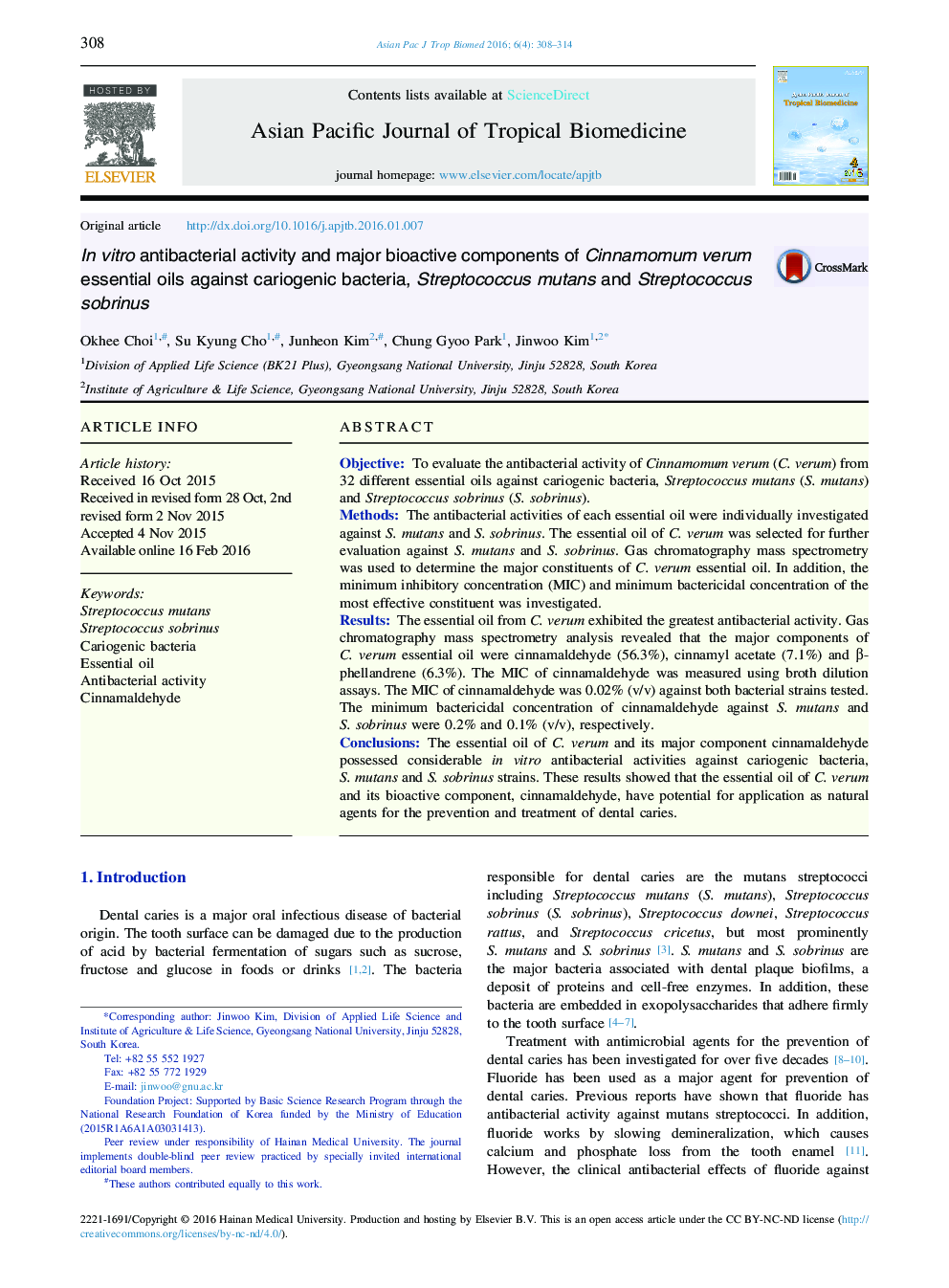| Article ID | Journal | Published Year | Pages | File Type |
|---|---|---|---|---|
| 2032443 | Asian Pacific Journal of Tropical Biomedicine | 2016 | 7 Pages |
ObjectiveTo evaluate the antibacterial activity of Cinnamomum verum (C. verum) from 32 different essential oils against cariogenic bacteria, Streptococcus mutans (S. mutans) and Streptococcus sobrinus (S. sobrinus).MethodsThe antibacterial activities of each essential oil were individually investigated against S. mutans and S. sobrinus. The essential oil of C. verum was selected for further evaluation against S. mutans and S. sobrinus. Gas chromatography mass spectrometry was used to determine the major constituents of C. verum essential oil. In addition, the minimum inhibitory concentration (MIC) and minimum bactericidal concentration of the most effective constituent was investigated.ResultsThe essential oil from C. verum exhibited the greatest antibacterial activity. Gas chromatography mass spectrometry analysis revealed that the major components of C. verum essential oil were cinnamaldehyde (56.3%), cinnamyl acetate (7.1%) and β-phellandrene (6.3%). The MIC of cinnamaldehyde was measured using broth dilution assays. The MIC of cinnamaldehyde was 0.02% (v/v) against both bacterial strains tested. The minimum bactericidal concentration of cinnamaldehyde against S. mutans and S. sobrinus were 0.2% and 0.1% (v/v), respectively.ConclusionsThe essential oil of C. verum and its major component cinnamaldehyde possessed considerable in vitro antibacterial activities against cariogenic bacteria, S. mutans and S. sobrinus strains. These results showed that the essential oil of C. verum and its bioactive component, cinnamaldehyde, have potential for application as natural agents for the prevention and treatment of dental caries.
